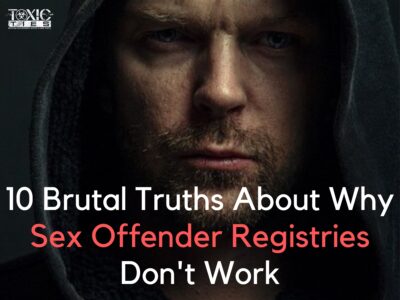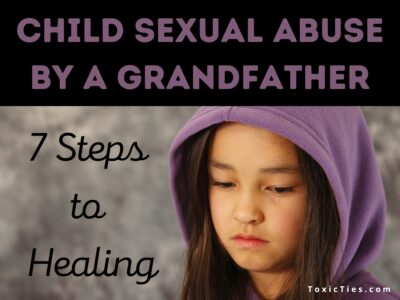Over the past decades, there’s been a growing awareness that intrafamilial child sexual abuse — or incest — is not a rare and isolated issue.
It’s a widespread problem that corrodes society, leaves countless children traumatized, and destroys lives.
However, it is still a highly taboo, obscured topic.
In this article, we will look at the reasons why child sexual abuse involving a family member is so often unacknowledged, unreported, and swept under the rug.
But first, what exactly is intrafamilial child sexual abuse?
What is Intrafamilial Child Sexual Abuse?
Intrafamilial child sexual abuse (“intra” — within, inside) or incest is sexual activity with a minor that happens within the family.
The abuser doesn’t have to be a blood relative but someone a child identifies as a family member.
For example, incest can take place between
- parent and child
- parent and adopted child
- stepparent and stepchild
- grandparent and grandchild
- uncle/aunt and niece/nephew
- biological siblings
- non-biological siblings
According to research, approximately 30% of all child sexual abuse is intrafamilial.
If incest is so common, why is it so hidden? Here are some reasons that contribute to the secrecy and the denial surrounding it.

1. The Stigma of Incest
The stigma of incest refers to the shame and disgrace people associate with child sexual abuse in the family (and child sexual abuse in general).
It means that not only the perpetrator but also the victim and the entire family are implicated in the abuse and even ostracized by the community.
Because of the stigma attached to incest, family members are often unwilling to face the truth and protect the children.
2. Family is Everything
Another reason for the secrecy and the denial of intrafamilial child sexual abuse is our cultural messages about the sanctity of family.
We are a family-oriented society.
Despite how progressive and achievement-driven we are, family is still considered a top priority in life. The very idea of happiness for most people is intertwined with the idea of family.
So when an ugly reality emerges, people are often faced with a choice: protect the family or protect the child.
In many cases, the family wins.
For many incest survivors, that meant they had to deal with the abuse alone. They had to keep quiet so they don’t get the abuser “in trouble” and cause a rift in the family.
Others had to deal with denial, disbelief and gaslighting, and ultimately feel betrayed by everyone they ever loved or trusted.
What a frightening and excruciating experience.
3. Grooming
“Family is everything” isn’t the only trope that enables the silence around intrafamilial sexual abuse.
The deeper reason why the abuse stays hidden is that the abuser often “grooms” the child, the family, and even the community at large.
“Grooming” refers to an adult’s effort to build an emotional connection with a child for selfish or criminal reasons.
Lowering the child’s inhibitions is often part of grooming. For example,
- showing the child erotic or pornographic images
- giving them alcohol or drugs
- desensitizing them to inappropriate physical touch
- showering them with gifts, etc.
But in cases of incest, grooming extends beyond the child. The perpetrator usually has close, trusting relationships with other family members so that they’re always above suspicion. They may also be the family benefactor, a person everyone relies on.
On a community level, they try to create an impeccable reputation that would allow them to continue the abuse without raising any red flags.
When the family and the community are groomed to completely trust and depend on the perpetrator, it is much easier to commit incest with impunity.

4. Gaslighting
Gaslighting refers to deliberate attempts to make someone doubt their perception of reality.
A sexually abusive relative will most likely use gaslighting to convince a child that the abuse has to stay hidden.
For example, common ways to gaslight a child who is a target for sexual abuse is to tell them that
- a sexual relationship between an adult and a child is normal in some *special* circumstances
- they are equal partners in the relationship
- other family members are not to be trusted because they wouldn’t understand
- it’s OK to explore their bodies with a “safe” adult
- if they enjoyed the abuse, they are responsible for it
- their behavior invited the abuse (i.e., telling a teenage girl that she was flirting with or intentionally provoking the abuser)
- the abuse didn’t really happen (they imagined it all)
The end goal of gaslighting is to corrode the child’s sense of self and make them paralyzed with fear and doubt.
5. Intimidation
Intimidation tactics are also widely used to keep the abuse a secret.
For example, common threats include telling the child that
- the abuse is a crime and they will go to jail for it
- if the abuse is discovered, they will be removed from the family
- their family will be mad at them
- the perpetrator of the abuse will go to prison (especially if the perpetrator financially supports the family)
- their friends will find out and they will be shamed/ostracized
- something bad will happen to them
If the perpetrator is using intimidation tactics with the child, most likely the rest of the family is also under their control.

5. Stranger Danger
Perhaps, the biggest reason why incest often remains unseen is the widespread belief that a child molester is a creepy guy in the van.
This common and often erroneous assumption originated in the 1970s and 80s. Following a few high-profile child abductions, the government released a series of public announcements warning children to stay away from people they don’t know.
This is how “stranger danger” became a part of our collective psyche.
Parents started teaching their children to be afraid of strangers. Eventually, this line of thinking led to the creation of public sex offender registries containing the record of all the “dangerous strangers” lurking in dark alleys.
However, modern research shows that statistically, a child abuser is more likely to be a relative or at the very least, someone a child knows. In fact, 93 percent of abused children know the perpetrator.
So the family is often unaware of what’s going on right under their noses.
As one child sexual abuse survivor recalls,
“My grandfather was a pillar of the community and beloved by his family. He was also sexually abusive.”
Refusing to believe the truth doesn’t make it any less true. Stereotyping predators as strangers with candy makes us blind to the real predators that may be lurking in our own families.

Final Thoughts
Family is love, support, safety.
But for the children who were sexually abused by their relative or caregiver, family becomes synonymous with shame, danger, and denial.
They’re dealing not only with the reality of the abuse but also with the tremendous silence embedded in it.
This silence is very intentional. And more often than not, it’s perpetuated by the family.
The intent behind this post is to shed light on intrafamilial child sexual abuse and to provide a safe space for the survivors to share their truth, no matter how long ago the abuse happened.
The scars may never disappear, but releasing that secret is the only way to heal.
That is why we have to talk about what people don’t talk about — child sexual abuse at the hands of a family member.
As nightmarish as it sounds, it is a stark reality for many children and adolescents.









Cheers!